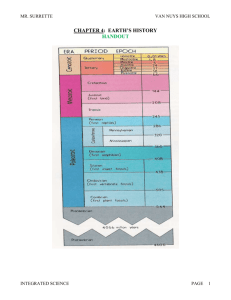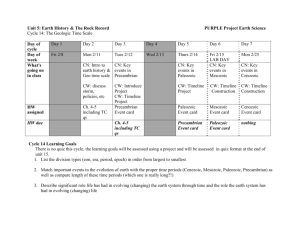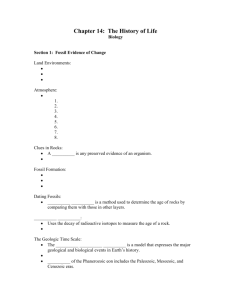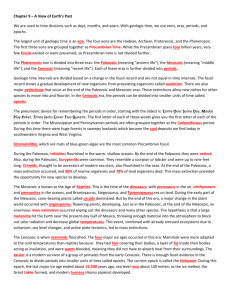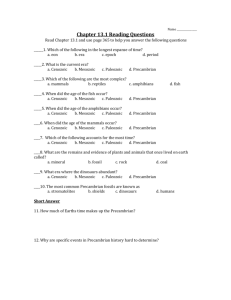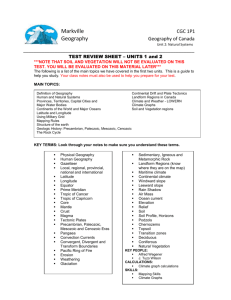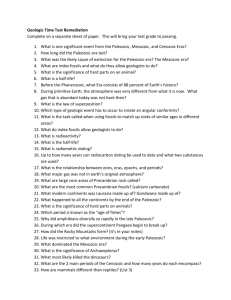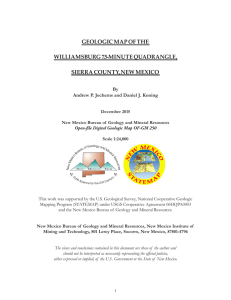README
advertisement
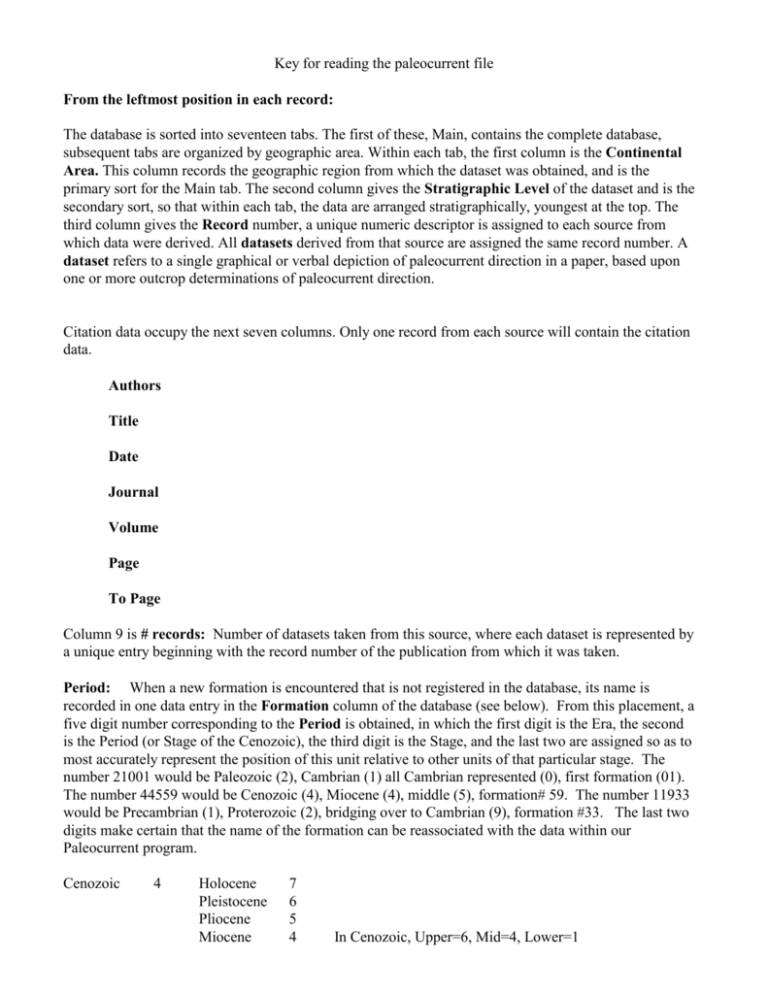
Key for reading the paleocurrent file From the leftmost position in each record: The database is sorted into seventeen tabs. The first of these, Main, contains the complete database, subsequent tabs are organized by geographic area. Within each tab, the first column is the Continental Area. This column records the geographic region from which the dataset was obtained, and is the primary sort for the Main tab. The second column gives the Stratigraphic Level of the dataset and is the secondary sort, so that within each tab, the data are arranged stratigraphically, youngest at the top. The third column gives the Record number, a unique numeric descriptor is assigned to each source from which data were derived. All datasets derived from that source are assigned the same record number. A dataset refers to a single graphical or verbal depiction of paleocurrent direction in a paper, based upon one or more outcrop determinations of paleocurrent direction. Citation data occupy the next seven columns. Only one record from each source will contain the citation data. Authors Title Date Journal Volume Page To Page Column 9 is # records: Number of datasets taken from this source, where each dataset is represented by a unique entry beginning with the record number of the publication from which it was taken. Period: When a new formation is encountered that is not registered in the database, its name is recorded in one data entry in the Formation column of the database (see below). From this placement, a five digit number corresponding to the Period is obtained, in which the first digit is the Era, the second is the Period (or Stage of the Cenozoic), the third digit is the Stage, and the last two are assigned so as to most accurately represent the position of this unit relative to other units of that particular stage. The number 21001 would be Paleozoic (2), Cambrian (1) all Cambrian represented (0), first formation (01). The number 44559 would be Cenozoic (4), Miocene (4), middle (5), formation# 59. The number 11933 would be Precambrian (1), Proterozoic (2), bridging over to Cambrian (9), formation #33. The last two digits make certain that the name of the formation can be reassociated with the data within our Paleocurrent program. Cenozoic 4 Holocene Pleistocene Pliocene Miocene 7 6 5 4 In Cenozoic, Upper=6, Mid=4, Lower=1 Mesozoic Paleozoic 3 2 Precambrian 1 Oligocene Eocene Paleocene 3 2 1 Cret-Paleoc U. Cretaceous L. Cretaceous Jurassic Triassic 5 4 3 2 1 with 9 reserved for (i.e. 44903= Miocene-Pliocene) formations that include next substage up, and 0 reserved for (i.e. 44016=entire Miocene) entire interval. In the Mesozoic and Paleozoic, the stage names are assigned progressively greater numbers, still reserving the 0, and 9 as above. Permian 7 Pennsylvanian 6 Mississippian 5 Devonian 4 Silurian 3 Ordovician 2 Cambrian 1 Algokian Archaean 1 0 Direction: Direction the current was flowing toward, with North as 0 (or 360). Longitude: In degrees, West is negative, east is positive. Latitude: In degrees, South is negative, north is positive. # Data Points: Number of outcrop measurements made for each dataset entered. i.e. you may have a rose diagram with 15 measurements in it. Dispersion: In degrees, the portion of a circle containing the data. Continent: Data are derived from this plate or continent 1 African 2 Indo-Australian 3 North American 4 South American 5 European 6 Antarctic 7 Indian 8 Great Britain 9 China 10 Siberian 11 Kazakhistan 12 Baltic 13 Adriatic 14 Iberian 15 Anatolia 16 17 18 19 20 21 22 23 24 Iranian Volgastan Baluchistan Baghdadistan Madagascar Appalachian Greenland Newfoundland states Paleocurrent Indicator: Outcrop tool used to determine paleocurrent directions 1 crossbedding 2 ripple marks 3 paleocurrent indicator 4 sole marks 5 fossil orientation 6 wind direction 7 current direction 8 turbidity currents 9 topography 10 miscellaneous 11 slumps and folds 12 flute/grooves 13 imbrication 14 channel axes 15 parting lineations 16 model 17 provenance 18 sed thickening 19 electric log/dip log 20 grain orientation Area in Sq Km.: Best estimate of how large an area was sampled. Environment: Author's assessment of depositional environment 1 marine general 2 marine shallow 3 marine deep 4 lacustrine 5 fluvial deltaic 6 fluviatile 7 alluvial 8 subaerial (eolian) Lithology Dominant in deposit. 1 sandstone 2 shale 3 siltstone or turbidites 4 conglomerate 5 limestone 6 carbonate sand 7 volcanic or glacial Formation: Name of the formation from which the data were gathered. This name is entered only once in the entire database, at which time the period number is described. All subsequent data from the same formation are grouped under the same Period as that given this formation on its original entry.
